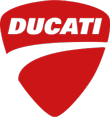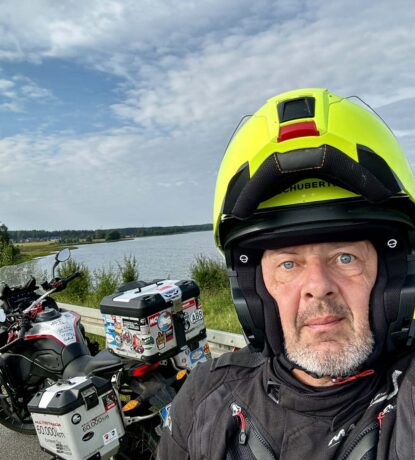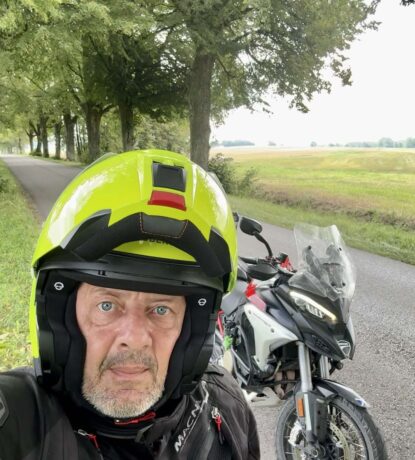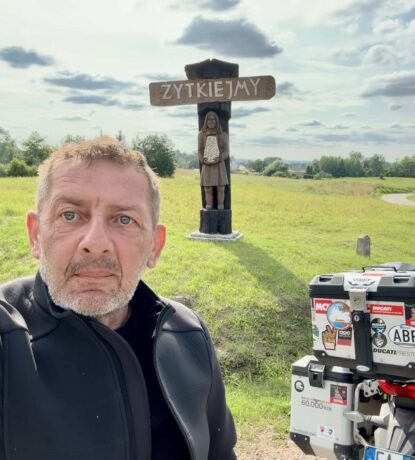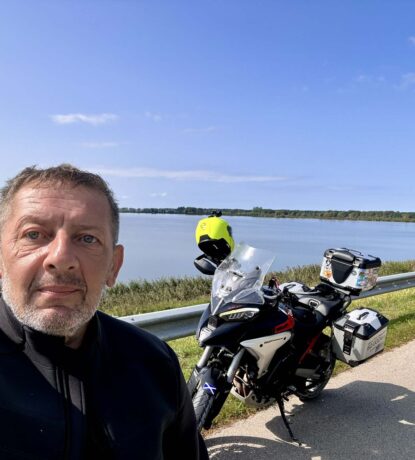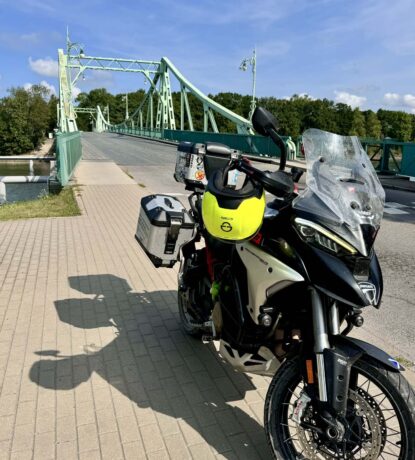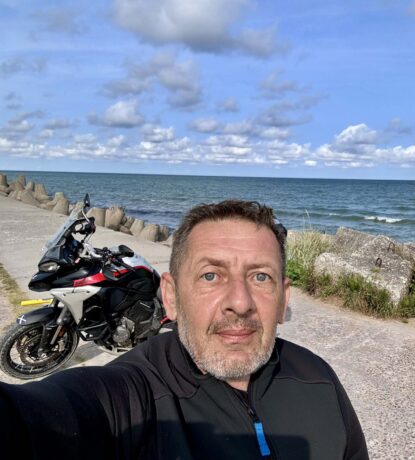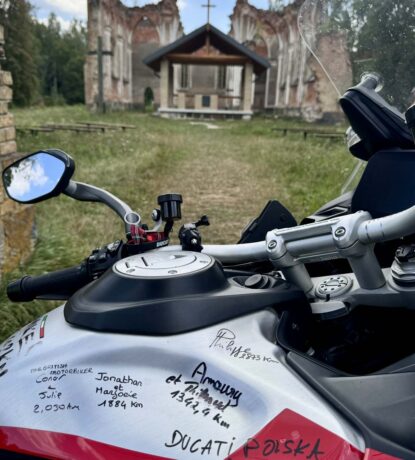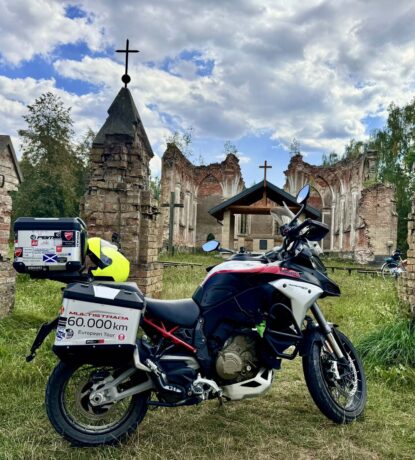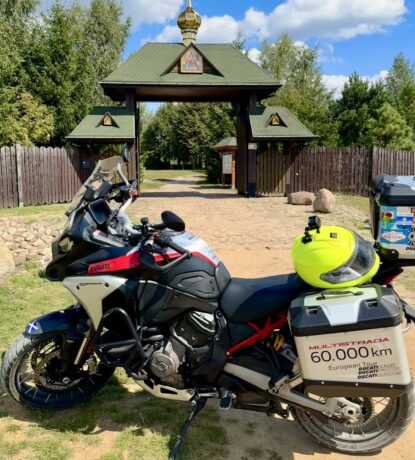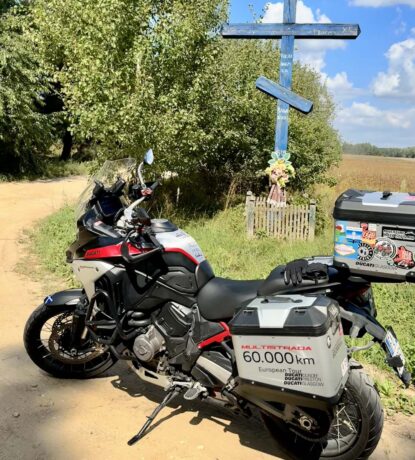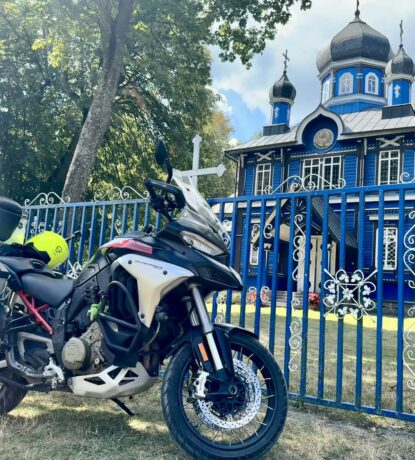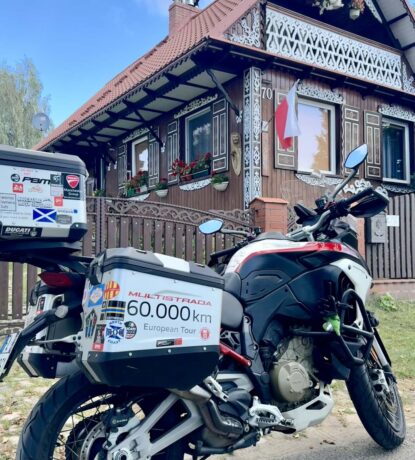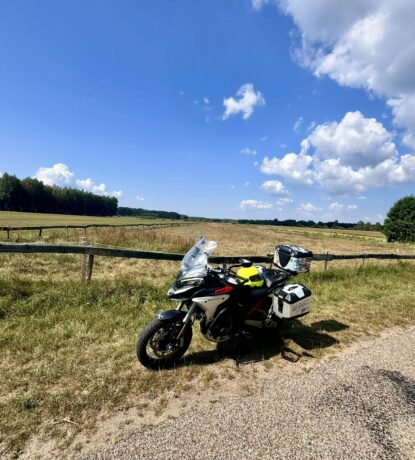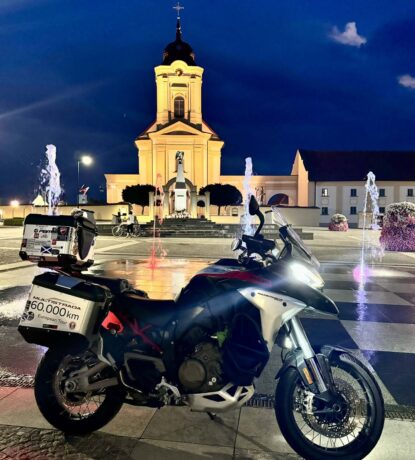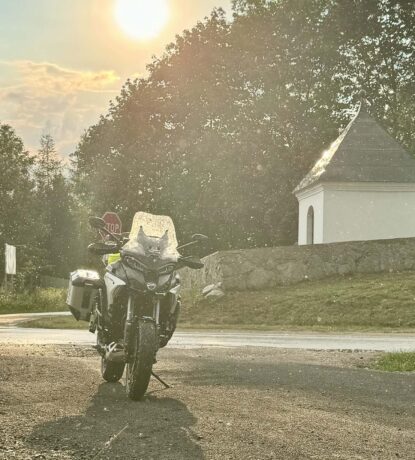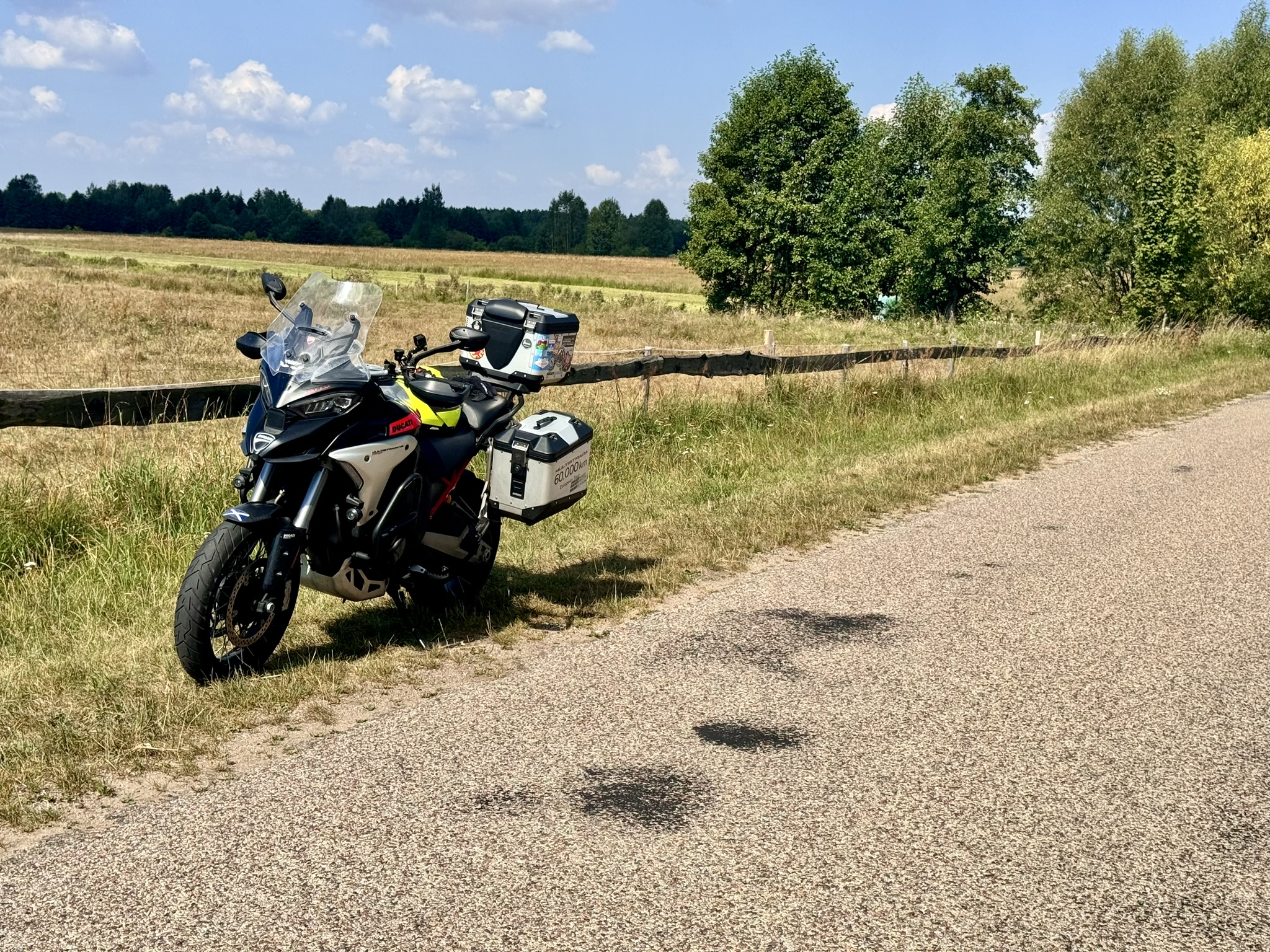
Jacek
2637 kmWhile browsing social media, I came across an opportunity to apply for the Multistrada 60,000 km European Tour program. As a traveler, I wanted to be one of the participants in such a fascinating Ducati project and, at the same time, test the Multistrada V4 Rally.
The feedback about being accepted into the project arrived after a few weeks, and I sat down to plan my route. I decided to head east across Poland and then north through Europe, passing through Lithuania into Latvia. The route was intended to cover less traveled roads of varying quality, including gravel paths, and to cross little-known, rarely used border crossings.
My slot was scheduled from August 16th to 23rd, 2024, with the pickup of the motorcycle in my hometown at the Ducati Liberty Motors showroom in Łódź, and delivery to the next participant at Ducati Liberty Motors Wrocław.
Day 1: The day was mainly a transit to eastern Poland, but I managed to visit the Treblinka Museum. At the end of the day, I got caught in a rainstorm, but the sun came out and a rainbow appeared in the sky. This is how I arrived in Podlasie.
Day 2: The journey was planned through the Podlasie lowlands, a region of historic and unique colorful buildings with beautiful shutters, known as the “”Land of Open Shutters,”” and stunning Orthodox religious buildings. The road led through little-used side roads, part of the route followed the “”Stork Nest Trail,”” all the way to the ruins of a church in Jałówka, right on the Belarusian border. Since Belarus is outside the EU, I headed to Lithuania, crossing the border after traveling several kilometers along a forest path. The accommodation was unusual, as it took place in a Catholic Monastery on the Lithuanian side in Druskininkai.
Day 3: From southern Lithuania through the central part of the country, I headed towards Latvia, by the Baltic Sea. I chose less traveled routes, where I could admire nature and enjoy the fresh air. There were fields, forests, and buildings every few kilometers. I again wanted to cross the Lithuanian-Latvian border at a little-used border crossing, but none of the available navigation apps (five in total) could manage it. As a traveler, I decided to go “”analog,”” using a map and compass. It worked out, and it was worth it. I thus arrived in Latvia, once again staying overnight in an unusual place—Karosta Prison, a museum and hostel in a former Soviet-era military prison.
Day 4: The first three days were very intense. I had already covered about 1,100 km on roads of less than ideal quality, gravel paths, and sand. The plan for the day included exploring historical WWII fortifications and coastal artillery bases, which are being swallowed by the Baltic Sea. I returned to Lithuania and rested in the Baltic resort of Palanga.
Day 5: Along the Baltic Sea coast, I headed to Cape Ventė, where there is a border with Russia on the bay. Then I reached the town of Rusnė—here, too, is the Russian border with a beautiful promenade. Further along the Neman River, which also serves as the Lithuanian-Russian border, I headed towards Poland. I crossed the border again on a narrow asphalt road on the edge of a forest and a village. I arrived in the Masuria region, the Land of a Thousand Lakes in Poland. Here I visited the historic Stańczyki bridges, which resemble Roman aqueducts.
Day 6: Through the Masuria and Warmia regions, along the border with Russia, on beautiful side roads, I aimed to reach the Polish-Russian border post. Due to the current geopolitical situation, after a cautionary conversation with the Border Guard, I gave up. Instead, I went to the Pasłęka River, where the Prussian border used to be. Now there is a historic bridge and Polish territory.
Day 7: From Warmia, I headed towards Kashubia. I visited the city of Frombork, associated with the astronomer Nicolaus Copernicus, then I visited the city of Gdańsk and ended up in a cottage settlement in Kashubia. The whole route ran along beautiful winding roads through forests and lakes.
Day 8: Once again, a transit through Kuyavia, Greater Poland, to Lower Silesia, to the Wrocław branch of Ducati Liberty Motors. I once again planned the route from north to south of Poland, taking into account winding roads through forests, lakes, and charming little towns.
Over eight days, I traveled through three countries—Poland, Lithuania, and Latvia—on an amazing motorcycle. I traveled through beautiful regions and lands devoid of industry, filled with wild nature and landscapes that cannot be found anywhere else in Europe.
The power delivery of the Multistrada V4 Rally across the entire rev range is impressive. The motorcycle handles like it’s on rails in any condition. The large fuel tank provides comfort for covering long distances and its geometry offers an optimal control in a standing position. Complemented by the footpegs, different brake pedal, and spoked wheels, all features of the V4 Rally are a plus for off-road riding. The motorcycle can be ridden in any condition and on any surface (just equip it with dual-sport tires).
The stages
Find day after day the different stages and especially the GPX tracks that you can download
